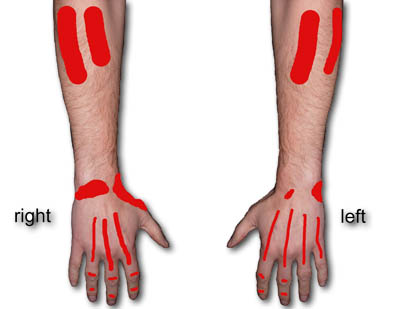 An interesting article appeared in the Times Online titled “Doctors identify ‘PlayStation palm’ as a legitimate medical complaint” which takes a broad look at how more and more types of repetitive strain injuries originating from use of video gaming machines are being discovered. It should be noted that a ‘video gaming machine’ can encompass the set-top box variety, a full-sized PC or indeed a miniature hand held device, the only difference being the types of repetitive motion that the users engage in order to interact.
An interesting article appeared in the Times Online titled “Doctors identify ‘PlayStation palm’ as a legitimate medical complaint” which takes a broad look at how more and more types of repetitive strain injuries originating from use of video gaming machines are being discovered. It should be noted that a ‘video gaming machine’ can encompass the set-top box variety, a full-sized PC or indeed a miniature hand held device, the only difference being the types of repetitive motion that the users engage in order to interact.
It should also be noted that video gaming is a highly addictive pastime (I speak from the experience of my youth). Video games are designed to be addictive; let’s face it, if they were not, players would rapidly lose interest and move onto something else, and the manufacturers would not sell many games.
There are usually very high levels of
 We are a species that spends most of our lives battling addictions of one sort or another – ranging from what we consume to television to news, the list is endless. Our addiction to technology is no different. The cool technological gadgets that adorn our lives are just so addictive!
We are a species that spends most of our lives battling addictions of one sort or another – ranging from what we consume to television to news, the list is endless. Our addiction to technology is no different. The cool technological gadgets that adorn our lives are just so addictive! The common position for hands hovering above a keyboard is as shown on the right, which I refer to as the ‘claw’. This position elevates the tension in the aforementioned extensor muscles, causing them to become fatigued over prolonged periods of time. Typing whilst the hand/wrists are in this position (another common posture mistake) will further
The common position for hands hovering above a keyboard is as shown on the right, which I refer to as the ‘claw’. This position elevates the tension in the aforementioned extensor muscles, causing them to become fatigued over prolonged periods of time. Typing whilst the hand/wrists are in this position (another common posture mistake) will further 
 Just came across an old
Just came across an old  The rate of success in dealing with RSI symptoms is proportional to the speed that a sufferer can diagnose the causes of those symptoms, and their understanding of the corrective actions required to avoid further injury.
The rate of success in dealing with RSI symptoms is proportional to the speed that a sufferer can diagnose the causes of those symptoms, and their understanding of the corrective actions required to avoid further injury.